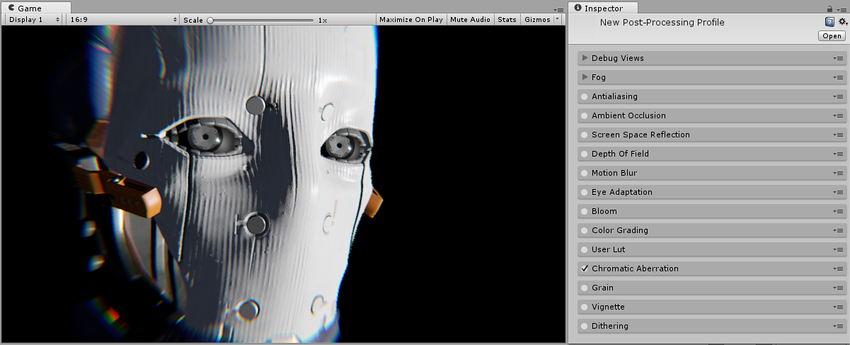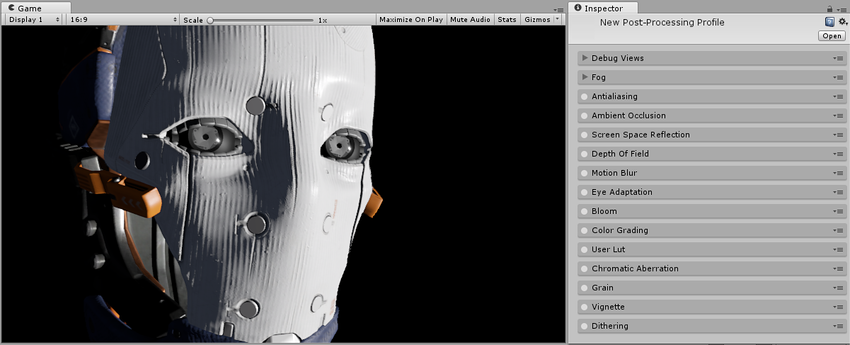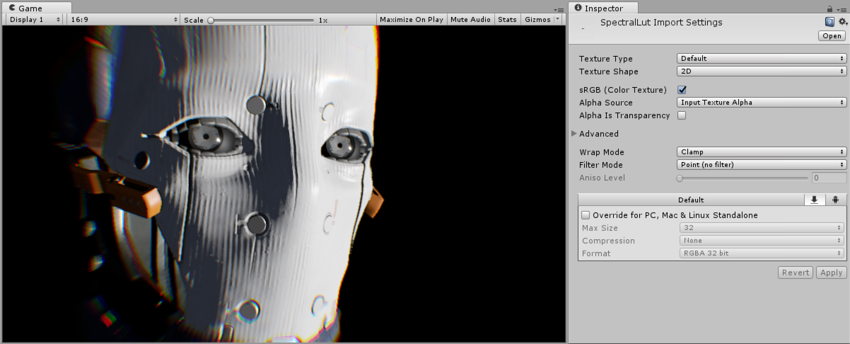- Unity User Manual (5.6)
- Графика
- Обзор графических возможностей
- Post-processing overview
- Chromatic Aberration
Chromatic Aberration
The effect descriptions on this page refer to the default effects found within the post-processing stack.
In photography, chromatic aberration is an effect resulting from a camera’s lens failing to converge all colors to the same point. It appears as “fringes” of color along boundaries that separate dark and bright parts of the image.
The Chromatic Aberration effect is used to replicate this camera defect, it is also often used to artistic effect such as part of camera impact or intoxication effects. This implementation provides support for red/blue and green/purple fringing as well as user defined color fringing via an input texture.



Properties
| Property: | Function: |
|---|---|
| Intensity | Strength of chromatic aberrations. |
| Spectral Texture | Texture used for custom fringing color (will use default when empty) |
Optimisation
- Reduce Intensity
Details
Performances depend on the Intensity value (the higher it is, the slower the render will be as it will need more samples to render smooth chromatic aberrations).
Chromatic Aberration uses a Spectral Texture input for custom fringing. Four example spectral textures are provided with the Post-processing stack:
Red/Blue (Default)
Blue/Red
Green/Purple
Purple/Green
You can create custom spectral textures in any image editing software. Spectral Texture resolution is not constrained but it is recommended that they are as small as possible (such as the 3x1 textures provided).
You can achieve a less smooth effect by manually setting the Filter Mode of the input texture to Point (no filter).

Requirements
- Shader model 3
Сверьтесь со страницей аппаратные возможности графики и её эмуляция для более детального ознакомления со списком совместимого железа.
2017–05–24 Page published with no editorial review - Leave page feedback
New feature in 5.6